Bose ProFlight Series 2 Handleiding
Bose
Hoofdtelefoon
ProFlight Series 2
Bekijk gratis de handleiding van Bose ProFlight Series 2 (60 pagina’s), behorend tot de categorie Hoofdtelefoon. Deze gids werd als nuttig beoordeeld door 67 mensen en kreeg gemiddeld 4.4 sterren uit 34 reviews. Heb je een vraag over Bose ProFlight Series 2 of wil je andere gebruikers van dit product iets vragen? Stel een vraag
Pagina 1/60

PROFLIGHT SERIES 2
AVIATION HEADSET
Owner’s Guide

I M P O R TA N T S A F ETY I N S T R U C T I O N S
2
|
E N G
Please read and keep all safety and use instructions.
Important Safety Instructions
WARNINGS/CAUTIONS
• Do NOT use the headphones with noise canceling mode at any time the inability to hear surrounding sounds may
present a danger to yourself or others, e.g., while riding a bicycle or walking in or near trac, a construction site or
railroad, etc.
• Keep batteries out of reach of children.
• Please dispose of used batteries properly, following any local regulations.
• Danger of explosion if batteries are incorrectly replaced.
• Batteries may cause a fire or chemical burn if mishandled. Do not recharge, disassemble, heat, or incinerate.
• When a replacement is needed, use only a AA (LR06) alkaline batteries.
Please read and save this guide
Please read this guide carefully. Save this guide for future reference and make it easily accessible for passengers and
third parties who use this headset.
• Switch to an alternate communications method in the event of a headset issue.
In the unlikely event of any headset issue or failure in the passive noise reducing mode, switch to an alternate
communications method and use standard cockpit resource management skills to minimize distractions.
• Use the headset at a moderate volume level.
To avoid hearing damage, use the headset at a comfortable, moderate volume level. Limit the headset volume to
safe levels that do not interfere with your ability to hear informational sounds and warning alarms, such as stall
warnings or gear up, while piloting.
• Turn the headset o if it emits any loud noise.
As with any complex electronic device, it is possible for this headset to fail during operation. Symptoms of failure,
which may include loud tones, distortion, feedback squeals and loss of communications signal in the headset, can
occur in either the Acoustic Noise Cancelling mode (turned on) or in the passive mode (turned o). If the headset
emits any loud noise and the related loss of communications in the Acoustic Noise Cancelling mode, turn o the
power switch. The headset will continue to provide communications in the passive noise-reducing mode. If the
problem persists, see “Troubleshooting” on page 47.
• Be aware of sound dierences while wearing the headset.
With the headset’s active and passive noise reduction, typical aircraft sounds (such as engines, propellers, warning
alarms, and other sound sources) may not sound familiar. Make sure you can hear and recognize these sounds when
using the headset while operating any aircraft.
• Do NOT make phone calls while piloting.
Do not use the headset for telephone calls during flight operations.
• Make sure your aircraft communications system volume control is easily accessible.
This control aects the strength of the communications signal coming into the headset. Make sure you can
understand critical communications even with Acoustic Noise Cancelling mode turned o. In this case, you may
need to turn up the aircraft communications system volume. In passive mode, the volume controls on the control
module will automatically be set to maximum volume. For additional volume control, use the intercom or radio
volume control. If your headset is aircraft powered, connect the headset to the aircraft power sources only as
described in “Aircraft Connectors” on page 29.

I M P O R TA N T S A F E T Y I N S T R U C T I O N S
3
|
E N G
• Make sure portable devices do not interfere with the aircraft’s navigation and communication systems.
Reference FAA AC 91.21-1D, or later revision, for installation approval.
It is the pilot’s responsibility to ensure that portable devices do not interfere with the aircraft’s navigation and
communication systems, as well as to determine if the portable device is suitable for use with the headset.
• Use only AA alkaline batteries.
To avoid risk of explosion, replace the batteries only with AA alkaline batteries. Properly dispose of used batteries.
• Do NOT repair the headset yourself.
Contact the Bose organization in your country/region for specific care, return and shipping instructions.
Visit: global.Bose.com
• Do not use the headset with a helmet or as part of a crash protection system.
The headset is not intended for such use, and has not been certified for crash protection. Dismantling, reassembly
or modification of the headset, or any part, for use in a helmet or other crash protection system could result in
severe bodily injury and such unauthorized use will void the limited product warranty.
• Do NOT immerse the headset or any parts in water or any other liquid.
See “Clean the headset” on page 41 for cleaning instructions.
Contains small parts which may be a choking hazard. Not suitable for children under age 3.
This product contains magnetic material. Consult your physician on whether this might aect your
implantable medical device.
• Do NOT expose this product to dripping or splashing, and do not place objects filled with liquids, such as vases,
on or near the product.
• Do NOT make unauthorized alterations to this product.
• Do not expose products containing batteries to excessive heat (e.g. from storage in direct sunlight, fire or the like).
NOTE:
This equipment has been tested and found to comply with the limits for a Class B digital device, pursuant to Part
15 of the FCC Rules. These limits are designed to provide reasonable protection against harmful interference in a
residential installation. This equipment generates, uses, and can radiate radio frequency energy and, if not installed
and used in accordance with the instructions, may cause harmful interference to radio communications. However,
there is no guarantee that interference will not occur in a particular installation. If this equipment does cause harmful
interference to radio or television reception, which can be determined by turning the equipment o and on, the user
is encouraged to try to correct the interference by one or more of the following measures:
• Reorient or relocate the receiving antenna.
• Increase the separation between the equipment and receiver.
• Connect the equipment into an outlet on a circuit dierent from that to which the receiver is connected.
• Consult the dealer or an experienced radio/TV technician for help.
Changes or modifications not expressly approved by Bose Corporation could void the user’s authority to operate this
equipment.
This device complies with part 15 of the FCC Rules and with Industry Canada license-exempt RSS standard(s).
Operation is subject to the following two conditions: (1) This device may not cause harmful interference, and (2) this
device must accept any interference received, including interference that may cause undesired operation.
This device complies with FCC and Industry Canada radiation exposure limits set forth for general population.
This transmitter must not be co-located or operating in conjunction with any other antenna or transmitter.
CAN ICES-3 (B)/NMB-3(B)
Bose Corporation hereby declares that this product is in compliance with the essential requirements and
other relevant provisions of Directive 2014/53/EU and all other applicable EU directive requirements. The
complete declaration of conformity can be found at: www.Bose.com/compliance
Product specificaties
| Merk: | Bose |
| Categorie: | Hoofdtelefoon |
| Model: | ProFlight Series 2 |
Heb je hulp nodig?
Als je hulp nodig hebt met Bose ProFlight Series 2 stel dan hieronder een vraag en andere gebruikers zullen je antwoorden
Handleiding Hoofdtelefoon Bose

16 Mei 2025

14 Mei 2024

14 Mei 2024

12 Juni 2023

15 Juni 2023

15 Juni 2023

12 Juni 2023

25 Mei 2023

16 Mei 2023

14 Mei 2023
Handleiding Hoofdtelefoon
- Avantree
- Krom
- ESI
- Genius
- Audizio
- Mackie
- Aluratek
- Lenovo
- SilverStone
- Swingson
- Cambridge
- Adesso
- Wiko
- Emporia
- RCA
Nieuwste handleidingen voor Hoofdtelefoon

29 Juli 2025

29 Juli 2025
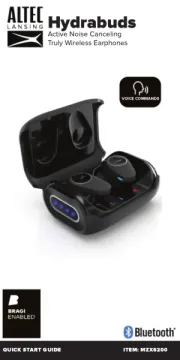
29 Juli 2025
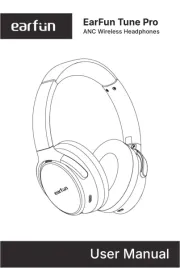
29 Juli 2025
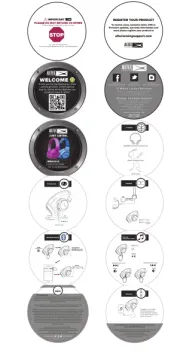
29 Juli 2025

29 Juli 2025

29 Juli 2025

28 Juli 2025
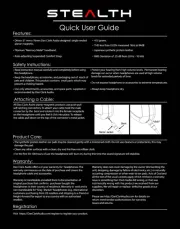
28 Juli 2025
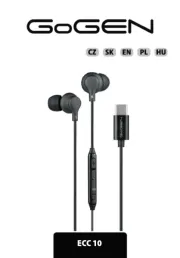
28 Juli 2025